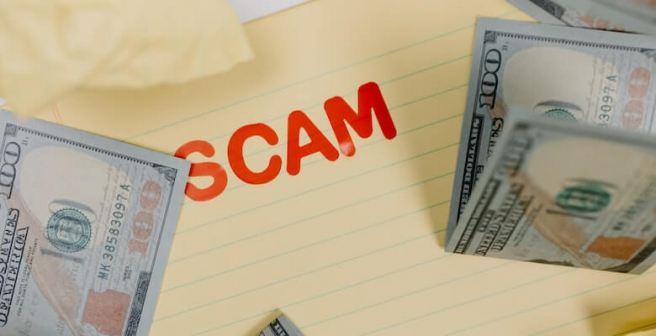How paper mills damage scholarly work and public trust in science

Science is based on evidence and careful consideration of existing knowledge versus new observations. Despite this empirical basis, it still relies on an immense amount of trust. For science to truly work, researchers, reviewers, publishers, institutions, and the public all need to trust one another to some extent, and for the most part, it works when each person acts in good faith. However, trust cannot be taken for granted. Some abuse the scientific publication system for profit, damaging the valuable trust that is necessary for effective dialog between all stakeholders. One increasingly common scam is the paper mill. Here, I would like to highlight the dangers they pose and how well-meaning researchers can avoid their pitfalls.
Paper mills–What are they and what do they do?
In short, a paper mill is an organization that produces and sells fraudulent manuscripts or authorship spots on such manuscripts1. This fake authorship scam is one of many targeting researchers today and, worryingly, it is apparently becoming more prominent as time goes on2.
Paper mill fees can range from a few hundred dollars to thousands of dollars3. These prices can be steep, especially for early career researchers, but desperation and the “publish or perish” paradigm can lead otherwise well-intentioned people to pay such services. For example, physicians in China are often required to meet quotas for papers published to gain promotions, leading some to use paper mills to inflate their publication count4. However, doing so is not only doing themselves a disservice, but also harming the course of research.
Harm caused by paper mills
If you have ever published in a conventional journal, you know that your paper will be subjected to considerable scrutiny during peer review. It seems dubious that a fake paper can get through peer review, get published, and then harm the direction of research, but this is in fact common. One cross-sectional study found that nearly all retracted paper-mill articles had received at least one citation since publication, with a median of 11 citations received5. It is impossible to quantify the losses to research budgets and working hours caused by misleading papers from predatory paper mills. As previously mentioned, issues with fraudulent authorship in China pose the risk of damaging biomedical research from this region, as it increases the scrutiny faced by legitimate researchers working in Chinese hospitals6.
Fake studies can also have very real consequences outside of basic research. Jennifer Byrne, a molecular oncology researcher noted that fake studies can create non-existent links between certain genes and cancers, making the sobering observation “People die from cancer — it is not a game. It is important that the literature describes the work that takes place.”
How the community is tackling paper mills
To prevent paper mill studies from being published in legitimate journals, all stakeholders in the process must be vigilant, including peer reviewers, editors, and readers.
The Committee on Publication Ethics (COPE) has spearheaded discussions on how to tackle this rising issue, and their report7 compiled with STM is an excellent place to start to familiarize yourself with recommendations to the scholarly community.
STM has taken a strong position in tackling paper mills. In April 2022, they launched the STM Integrity Hub8,9, which seeks to provide both a collaborative environment and accessible tools to facilitate identifying issues such as bogus images10. Artificial intelligence (AI) is a hot topic in many fields lately, and publication ethics is no exception. While AI has been used by paper mills to generate text and fake images11, it has also shown promise as another weapon in the arsenal against paper mills, with companies such as Turnitin introducing new AI technologies to detect AI-generated text and improve plagiarism detection12.
Why all researchers need to be aware, even if they never use a paper mill
For a paper mill to be successful, they need to produce papers that look reasonably convincing at first glance, which necessarily means that some readers will be duped. Researchers rarely read every reference cited in their paper in their entirety; indeed, researchers often read papers more superficially when they perceive the paper to be of lower quality or importance13. This means that if you include a citation needlessly based on a superficial reading of its contents, you may unwittingly reference a paper from a paper mill. Including such citations can lower the perceived quality of your work and even bring your research into question if dubious information is used to make an assertion about your results.
Spotting potential paper mills
Look out for tortured phrases
Paper mills have made extensive use of AI text generators to create or pad out their papers. This can result in grammatically correct but semantically odd or even meaningless phrases. For example, automated translation of foreign-language papers or AI-mediated paraphrasing to avoid plagiarism-detection algorithms has led to papers being published with phrases such as “counterfeit consciousness” instead of “artificial intelligence.14” Malapropisms can be understandable, since many researchers do not speak English as a first language, but tortured phrases for field-specific terms is a big clue that something is amiss.
Check images
Faked or manipulated images have been the downfall of many fraudulent papers. Paper-mill papers often use duplicate, stolen, or manipulated images in their results. Elisabeth Bik has offered some good guidance on spotting such manipulated or bogus images15.
Screen for errors in nucleotide reagents
Hundreds of studies have been brought into question by errors in their reported nucleotide reagents that mean that the observed results should not have been possible16. When dealing with genetic sequences, tools such as NCBI BLASTN are invaluable to ensure that these match with verified ones.
Request and review raw data
As a peer reviewer or editor, you have the right to request the raw data for a study17. Researchers who are cagey about sharing their data should certainly raise a red flag. Likewise, faked raw data can be more easily detected by people with intimate subject matter knowledge, which further highlights the need for collaboration.
When in doubt, verify individuals and institutions
Have you ever heard of Dr. Takeru Sato, PhD, at the Center for Plant Molecular Studies, the University of Marugame, Japan? Well, I hope not, because I just made up the individual, his affiliation, and even the institution. Still, most would be unlikely to pick up on this fake university without looking it up. Naturally, it isn’t feasible to verify every author for each paper you cite, but when the paper contents raise a red flag, using search engines to identify dubious co-authors and affiliations can help verify that a paper is fraudulent.
Conclusion
Scholarly publishers, researchers, and even governments are waking up to the harm caused by paper mills. While this is heartening, we may be witnessing a Red Queen effect, wherein paper mills adopt increasingly sophisticated tactics to avoid improved measures to detect their fraud. All people involved in the publication process need to stay vigilant and make use of the latest data and tools to identify academic fraud.
References
1. Systematic manipulation of the publishing process via “paper mills”. COPE: Committee on Publication Ethics https://publicationethics.org/resources/forum-discussions/publishing-manipulation-paper-mills.
2. Else, H. & Van Noorden, R. The fight against fake-paper factories that churn out sham science. Nature 591, 516–519 (2021).
3. Nash, J. Paper Mills—The Dark Side of the Academic Publishing Industry. MDPI Blog https://blog.mdpi.com/2022/05/09/paper-mills/ (2022).
4. Schneider, L. The full-service paper mill and its Chinese customers. For Better Science https://forbetterscience.com/2020/01/24/the-full-service-paper-mill-and-its-chinese-customers/ (2020).
5. Candal-Pedreira, C. et al. Retracted papers originating from paper mills: cross sectional study. BMJ 379, e071517 (2022).
6. Frederickson, R. M. & Herzog, R. W. Keeping Them Honest: Fighting Fraud in Academic Publishing. Mol. Ther. 29, 889–890 (2021).
7. Paper mills research. COPE: Committee on Publication Ethics https://publicationethics.org/resources/research/paper-mills-research.
8. STM Integrity Hub – STM. https://www.stm-assoc.org/stm-integrity-hub/.
9. Upholding research integrity: An interview with Joris van Rossum on the STM Research Integrity Hub. Editage Insights https://www.editage.com/insights/what-is-the-stm-integrity-hub-and-what-does-it-do-interview-with-joris-van-rossum (2023).
10. Cookson, C. Detection tool developed to fight flood of fake academic papers. Financial Times (2023).
11. AI paper mills and image generation require a co-ordinated response from academic publishers. Impact of Social Sciences https://blogs.lse.ac.uk/impactofsocialsciences/2022/12/15/ai-paper-mills-and-image-generation-require-a-co-ordinated-response-from-academic-publishers/ (2022).
12. Artificial intelligence (AI) and fake papers. COPE: Committee on Publication Ethics https://publicationethics.org/resources/forum-discussions/artificial-intelligence-fake-paper.
13. How status of research papers affects the way they are read and cited – ScienceDirect. https://www.sciencedirect.com/science/article/pii/S0048733322000129.
14. Else, H. ‘Tortured phrases’ give away fabricated research papers. Nature 596, 328–329 (2021).
15. Flemming, P. Spotting fake images in scientific research: insights from science integrity consultant Elisabeth Bik. The Publication Plan https://thepublicationplan.com/2022/11/29/spotting-fake-images-in-scientific-research-insights-from-science-integrity-consultant-elisabeth-bik/ (2022).
16. Else, H. Errors in genetic sequences mar hundreds of studies. Nature (2021) doi:10.1038/d41586-021-02136-y.
17. How can editors detect manuscripts and publications from Paper Mills? https://www.wiley.com/en-us/network/publishing/research-publishing/editors/how-can-editors-detect-manuscripts-and-publications-from-paper-mills.








